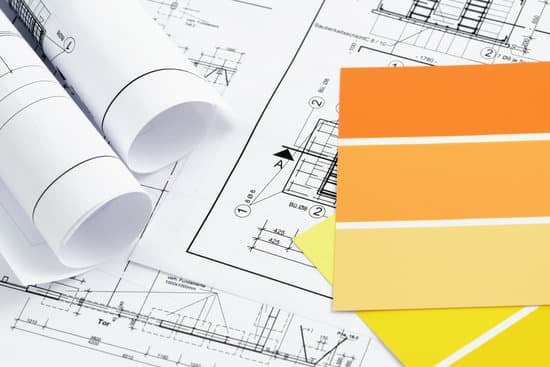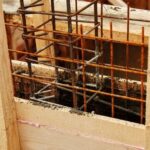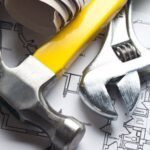Are you considering using your 401k to pay for home improvements? Many homeowners may find themselves in a similar situation, weighing the decision of tapping into their retirement savings to fund renovations or repairs. This article will delve into the pros and cons of using your 401k for home improvements, as well as alternative financing options and expert advice to help you make an informed decision.
Before making any decisions about using your 401k, it’s important to understand what exactly a 401k is and how it works. We’ll delve into the fundamentals of this retirement savings account to provide you with a comprehensive understanding of its implications on your financial future.
While there are potential benefits to using your 401k for home improvements, such as avoiding interest payments on loans, there are also drawbacks and risks to consider. By weighing these factors, along with exploring other financing options and expert advice, you can gain valuable insights into whether or not using your 401k is the right choice for your specific situation.
Understanding Your 401k
A 401(k) is a retirement savings plan sponsored by an employer. It allows employees to save and invest a portion of their paycheck before taxes are taken out. The funds in the account can then be used for retirement income. This type of plan is commonly offered as part of an employee benefits package, and many employers even offer matching contributions up to a certain percentage.
There are two main types of 401(k) plans: traditional and Roth. In a traditional 401(k), contributions are made on a pre-tax basis, meaning that they are not included in your taxable income for the year.
This reduces your current taxable income and allows you to defer paying taxes until you make withdrawals from the account during retirement. On the other hand, a Roth 401(k) involves making contributions with after-tax dollars, but qualified distributions in retirement are tax-free.
When it comes to managing your 401(k), you have control over how your money is invested within the plan. Typically, employers offer a range of investment options such as stock funds, bond funds, and money market funds. It’s important for individuals to regularly review their investment choices and ensure that their portfolio aligns with their risk tolerance and long-term financial goals.
- Contributions made on a pre-tax basis (traditional) or after-tax basis (Roth)
- Employers may offer matching contributions
- Investment options include stock funds, bond funds, and money market funds
Overall, understanding how your 401(k) works is crucial before considering using it for home improvements or any other financial need. Being knowledgeable about the specific features of your plan can help you make informed decisions about potential uses for your retirement savings.
- Regularly review investment choices
- Ensure portfolio aligns with risk tolerance and financial goals
- Consider seeking professional advice from a financial advisor
The Pros of Using 401k for Home Improvements
Using your 401k for home improvements can have several potential benefits that may make it an attractive option for some homeowners. While there are risks and drawbacks to consider, it’s important to explore the potential upsides of tapping into your retirement savings for this purpose.
Access to Funds Without Credit Check or Approval Process
One of the main advantages of using your 401k for home improvements is the ease of access to funds. Unlike traditional loans or lines of credit, accessing your 401k funds for home improvements does not typically require a credit check or approval process. This can be especially beneficial for individuals who may have lower credit scores or difficulty obtaining financing through other means.
Potential Tax Advantages
Depending on how you access the funds from your 401k, there may be potential tax advantages to using it for home improvements. For example, if you take out a loan from your 401k rather than making a withdrawal, you may be able to avoid early withdrawal penalties and taxes on the amount borrowed. Additionally, if you use the funds for qualified home improvement expenses, you may be eligible for certain tax deductions or credits.
Investment in Your Property
Using your 401k for home improvements allows you to make an investment in your property that could potentially increase its value. By using these funds to upgrade and enhance your home, you may be able to enjoy a higher resale value or increased equity in the property. This can be particularly appealing for those who view their home as a long-term investment and are looking to improve its overall value over time.
The Cons of Using 401k for Home Improvements
Using your 401k for home improvements may seem like a convenient option, but it comes with its own set of drawbacks and risks that should be carefully considered before making a decision. Here are some of the cons of using your 401k for home improvements:
1. Early withdrawal penalties: Withdrawing funds from your 401k before the age of 59 ½ can result in early withdrawal penalties. This means you could end up paying a significant portion of your withdrawn amount in taxes and penalties, reducing the overall amount you have available for retirement.
2. Impact on retirement savings: A key drawback of using your 401k for home improvements is the impact it can have on your long-term retirement savings. By taking money out now, you are potentially reducing the amount of money that could grow tax-deferred over time, affecting your financial security in retirement.
3. Missed investment growth opportunities: When you withdraw funds from your 401k for home improvements, you could miss out on potential investment growth during that period. This can significantly impact the overall growth of your retirement savings and lessen the potential funds available to you later in life.
It’s important to carefully weigh these drawbacks and risks before deciding to use your 401k for home improvements. Considering other financing options or speaking with a financial advisor can help provide insight into whether using your 401k is the best choice for your individual financial situation.
Alternatives to Using Your 401k
When considering home improvements, using your 401k is not the only option for financing your project. There are several alternatives to explore before dipping into your retirement savings. It’s important to weigh the pros and cons of each alternative in order to make an informed decision that is best for your financial situation.
Home Equity Loan or Line of Credit
One popular alternative to using your 401k for home improvements is taking out a home equity loan or line of credit. With this option, you can borrow against the equity you have built up in your home. This type of financing often comes with lower interest rates compared to personal loans or credit cards, making it a cost-effective way to fund your renovation project.
Personal Loans
Another option to consider is taking out a personal loan to cover the costs of your home improvement project. Personal loans are unsecured loans, meaning they do not require collateral such as your home or other assets. They can be obtained from banks, credit unions, or online lenders, and offer fixed interest rates and predictable monthly payments.
Cash-Out Refinance
A cash-out refinance involves refinancing your mortgage for more than you currently owe and pocketing the difference in cash. This can be a viable option if you have built up equity in your home and can secure a lower interest rate on the new mortgage. However, it’s essential to carefully consider the long-term implications and costs associated with refinancing before pursuing this route.
Exploring these alternatives before tapping into your 401k can help you make an informed decision about how best to finance your home improvements while preserving your retirement savings. Each option comes with its own set of advantages and drawbacks, so it’s crucial to carefully evaluate which method aligns with your financial goals and overall strategy.
Considerations Before Using Your 401k
Before making the decision to use your 401k for home improvements, there are several important factors that you should consider. One key consideration is the impact on your retirement savings. Withdrawing funds from your 401k can significantly impact your retirement nest egg, especially if you are still years away from retirement. It’s important to carefully evaluate whether the immediate benefit of home improvements outweighs the long-term impact on your financial security.
Another factor to weigh is the tax implications of using your 401k for home improvements. Generally, any distribution from a 401k is subject to income tax, and if you are under the age of 59 and a half, you may also be subject to an additional 10% early withdrawal penalty. Understanding the potential tax consequences of tapping into your 401k can help you make an informed decision about whether it is the right choice for funding your home improvement project.
Additionally, it’s important to assess your overall financial situation before deciding to use your 401k for home improvements. Consider factors such as existing debt, emergency savings, and other financial goals. If using your 401k will leave you financially vulnerable in other areas, it may be worth exploring alternative financing options for your home improvement project.
| Factors to Consider | Description |
|---|---|
| Impact on Retirement Savings | Withdrawing funds can reduce long-term financial security |
| Tax Implications | Distributions subject to income tax and potential penalties |
| Financial Situation | Evaluate existing debt, emergency savings, and overall financial goals |
Expert Advice
Using your 401k for home improvements is a decision that should not be taken lightly, and seeking expert advice can help you make an informed choice. Financial advisors and experts often have valuable insight into whether using your 401k for home improvements is a wise strategy.
One important consideration that experts often emphasize is the potential impact on your retirement savings. Withdrawing funds from your 401k means reducing the amount of money available for your retirement years. Experts caution that this could significantly affect the growth of your retirement nest egg, as well as potential tax implications.
Furthermore, financial advisors often advise individuals to explore alternative financing options before tapping into their 401k. Options such as home equity loans or lines of credit, personal loans, or even utilizing savings specifically earmarked for home improvements can provide the necessary funds without jeopardizing retirement savings. Ultimately, seeking expert advice can help you weigh the pros and cons of using your 401k for home improvements and make a well-informed decision that aligns with your financial goals.
Conclusion
In conclusion, while using your 401k for home improvements may seem like a convenient option, it is crucial to carefully consider the potential impact on your retirement savings. As discussed, there are both pros and cons to using your 401k for home improvements. On one hand, it can provide access to funds without taking out a loan or incurring debt. On the other hand, it can deplete your retirement savings and result in taxes and penalties.
It is important to explore all alternative financing options before deciding to use your 401k for home improvements. This may include exploring home equity loans, personal loans, or other financing options that will not impact your retirement savings. Additionally, considering the potential return on investment for the home improvement project is important, as it can help determine if using your 401k is a wise financial decision in the long run.
Before making any decisions regarding using your 401k for home improvements, consulting with a financial advisor or expert is highly recommended. They can provide personalized advice based on your individual financial situation and goals. Ultimately, weighing the potential benefits and risks of using your 401k for home improvements is vital in making an informed decision that will not jeopardize your long-term financial security.
Frequently Asked Questions
Can I Take Money Out of My 401k for House Repairs?
Taking money out of your 401k for house repairs is possible, but it’s generally not advisable. Withdrawing funds from your retirement account can result in penalties, taxes, and reduced savings for your future. It’s usually best to explore other financing options for house repairs before tapping into your 401k.
Is It a Good Idea to Use 401k to Pay Off House?
Using your 401k to pay off your house can have both advantages and disadvantages. While it may seem appealing to be debt-free, accessing your retirement funds can result in penalties and taxes. Additionally, you may lose out on potential investment growth by depleting your 401k balance early. It’s important to carefully weigh the consequences before making this decision.
Is It a Good Idea to Use Your 401k to Buy a House?
Using your 401k to buy a house is generally not recommended due to the potential negative financial implications. While some employer-sponsored plans offer loan provisions for home purchases, withdrawing funds from your 401k can lead to penalties and taxes. Given the long-term nature of retirement savings, it’s crucial to evaluate alternative funding options for buying a house.

I’m thrilled to have you here as a part of the Remodeling Top community. This is where my journey as an architect and remodeling enthusiast intersects with your passion for transforming houses into dream homes.





